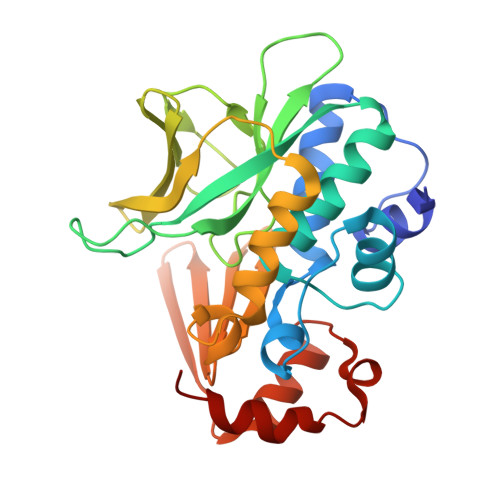Investigation of the Catalytic Triad of Arylamine N-Acetyltransferases: Essential Residues Required for Acetyl Transfer to Arylamines.
Sandy, J., Mushtaq, A., Holton, S.J., Schartau, P., Noble, M.E.M., Sim, E.(2005) Biochem J 390: 115
- PubMed: 15869465
- DOI: https://doi.org/10.1042/BJ20050277
- Primary Citation of Related Structures:
1W5R - PubMed Abstract:
The NATs (arylamine N-acetyltransferases) are a well documented family of enzymes found in both prokaryotes and eukaryotes. NATs are responsible for the acetylation of a range of arylamine, arylhydrazine and hydrazine compounds. We present here an investigation into the catalytic triad of residues (Cys-His-Asp) and other structural features of NATs using a variety of methods, including site-directed mutagenesis, X-ray crystallography and bioinformatics analysis, in order to investigate whether each of the residues of the catalytic triad is essential for catalytic activity. The catalytic triad of residues, Cys-His-Asp, is a well defined motif present in several families of enzymes. We mutated each of the catalytic residues in turn to investigate the role they play in catalysis. We also mutated a key residue, Gly126, implicated in acetyl-CoA binding, to examine the effects on acetylation activity. In addition, we have solved the structure of a C70Q mutant of Mycobacterium smegmatis NAT to a resolution of 1.45 A (where 1 A=0.1 nm). This structure confirms that the mutated protein is correctly folded, and provides a structural model for an acetylated NAT intermediate. Our bioinformatics investigation analysed the extent of sequence conservation between all eukaryotic and prokaryotic NAT enzymes for which sequence data are available. This revealed several new sequences, not yet reported, of NAT paralogues. Together, these studies have provided insight into the fundamental core of NAT enzymes, and the regions where sequence differences account for the functional diversity of this family. We have confirmed that each of the three residues of the triad is essential for acetylation activity.
Organizational Affiliation:
Department of Pharmacology, University of Oxford, Mansfield Road, Oxford OX1 3QT, UK. james.sandy@pharm.ox.ac.uk














